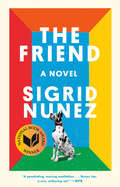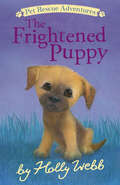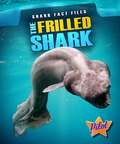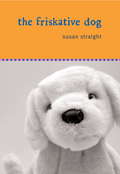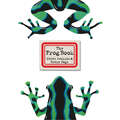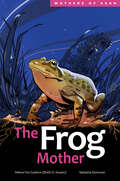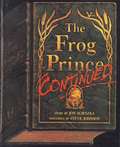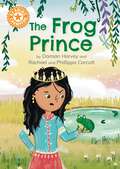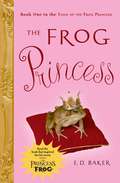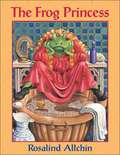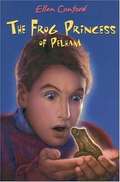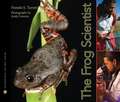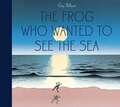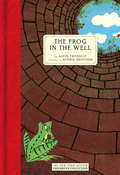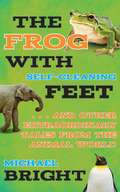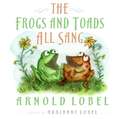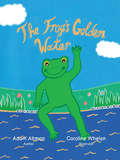- Table View
- List View
The Friend: A Novel
by Sigrid Nunez<P><P>A moving story of love, friendship, grief, healing, and the magical bond between a woman and her dog. <P><P>When a woman unexpectedly loses her lifelong best friend and mentor, she finds herself burdened with the unwanted dog he has left behind. Her own battle against grief is intensified by the mute suffering of the dog, a huge Great Dane traumatized by the inexplicable disappearance of its master, and by the threat of eviction: dogs are prohibited in her apartment building. <P><P>While others worry that grief has made her a victim of magical thinking, the woman refuses to be separated from the dog except for brief periods of time. Isolated from the rest of the world, increasingly obsessed with the dog's care, determined to read its mind and fathom its heart, she comes dangerously close to unraveling. But while troubles abound, rich and surprising rewards lie in store for both of them. <P><P>Elegiac and searching, The Friend is both a meditation on loss and a celebration of human-canine devotion. <P><b>Winner of the 2018 National Book Award for Fiction </b>
The Friend: Winner of the National Book Award for Fiction and a New York Times bestseller
by Sigrid NunezA moving story of love, friendship, grief, healing, and the magical bond between a woman and her dog.WINNER OF THE 2018 NATIONAL BOOK AWARD * A NEW YORK TIMES BESTSELLER * SHORTLISTED FOR THE 2020 INTERNATIONAL DUBLIN LITERARY AWARD'A true delight: I genuinely fear I won't read a better novel this year' FINANCIAL TIMES'Loved this. A funny, moving examination of love, grief, and the uniqueness of dogs' GRAHAM NORTON'Delicious' SUNDAY TIMES 100 BEST SUMMER READSWhen a woman unexpectedly loses her lifelong best friend and mentor, she finds herself burdened with the unwanted dog he has left behind. Her own battle against grief is intensified by the mute suffering of the dog, a huge Great Dane, and by the threat of eviction: dogs are prohibited in her apartment building.Isolated from the rest of the world, increasingly obsessed with the dog's care, determined to read its mind and fathom its heart, she comes dangerously close to unravelling. But while troubles abound, rich and surprising rewards lie in store for both of them.'Very, very clever. Mature. Entertaining. Eminently readable and re-readable. Absolutely delightful' IRISH TIMES'I loved it . . . It's one of my favourite books and it moved me' WHOOPI GOLDBERGA New York Times Notable Book of 2018 * A Financial Times 2018 Best Book: Critics Pick * A Buzzfeed Best Book of 2018 * A Bustle Best Fiction Book of 2018 * An NPR Best Book of 2018
The Friendly Beasts
by Tomie dePaola"The simple strains of this old Christmas melody are superbly reflected in the graceful, delicate, yet strong images that dePaola brings to the page....A Christmas remembrance to be long treasured." -- Booklist (starred review)"Beautiful." -- The Horn Book"Meticulous attention has been paid to every detail of design, color, and layout." -- School Library Journal
The Friendly Persuasion and Except for Me and Thee
by Jessamyn WestA delightful series of vignettes from the lives of a pioneer Quaker family. Covers leaving home, having children, living in difficult circumstances, losing a child, and much more.
The Frightened Puppy (Pet Rescue Adventures)
by Holly WebbWhile on vacation with her family, Avery finds a puppy whom she names Hazel. But where has Hazel come from? And how can Avery earn the little puppy's trust?Holly Webb&’s bestselling Pet Rescue Adventures series continues with The Frightened Puppy. Avery is excited to be on vacation with her family. They&’re staying in a beautiful house right by the river and have a lot of fun activities planned.The only thing that would make the trip even better is if she had a dog to play with. So when she finds a puppy, whom she names Hazel, all alone by the water, Avery knows she has to help her. But where has Hazel come from? And how can Avery earn the little puppy&’s trust?Pet Rescue Adventures is a series of heartwarming animal tales. Each book focuses on one kitten or puppy and their unique journey to find their new "forever home." A wonderful collection of heartwarming tales, perfect for animal lovers!
The Frilled Shark
by Sara Green"Engaging images accompany information about the frilled shark. The combination of high-interest subject matter and narrative text is intended for students in grades 3 through 7"
The Friskative Dog
by Susan StraightSharron was five when her father gave her the Friskative Dog. And just like the best-loved toys fromThe Velveteen Rabbit,Sharron has made the Friskative Dog real through her love and devotion. Now Sharron is nine, and her father is missing, and the Friskative Dog is more necessary to her than ever. Her father walked out about a year ago and has been lost to her ever since. If he were a dog, he'd be able to find his way home, Sharron thinks. But people don't have the same homing instincts as dogs. And you can't train them to be true. The Friskative Dogis about a young girl coming to accept that families can take all different shapes and sizes, and learning to live with hope and patience. Susan Straight has written a spare, delicate story, rich in metaphor and meaning, and full of love.
The Frog Alphabet Book (Jerry Pallotta's Alphabet Books)
by Jerry PallottaA is for Amazon Horned Frog. B is for Blue-legged Strawberry Frog. C is for Crested Newt. What other amphibians can you think of? Learn more about these sometimes cute, sometimes dangerous, but always fascinating animals in THE FROG ALPHABET BOOK. Jerry Pallotta and Ralph Masiello explore the ponds, look under rocks, and dig in the mud to bring you this colorful and fun way to learn more than the alphabet.
The Frog Book
by Steve Jenkins Robin PageCaldecott Honor–winning team Steve Jenkins and Robin Page explore form, color, and pattern, and capture the very unique nature of frogs in this brilliantly illustrated picture book. Perfect for fans of The Beetle Book, and young readers looking for nonfiction about this perennially fascinating animal.Long legs, sticky tongues, big round eyes, and other dazzling features—what's not to love about frogs? In this magnificently illustrated picture book, Caldecott Honor–winning team Steve Jenkins and Robin Page explore one of the world's most diverse—and most threatened—animals. With more than 5,000 different frog species on the planet, in every color of the rainbow and a vast number of vivid patterns, no creatures are more fascinating to learn about or look at. Jenkins and Page present a stunning array of these intriguing amphibians and the many amazing adaptations they have made to survive.
The Frog Mother (Mothers of Xsan)
by Hetxw’ms Gyetxw HusonTo the Gitxsan of Northwestern British Columbia, Nox Ga&’naaw is a storyteller, speaking truths of the universe. After Nox Ga&’naaw, the frog mother, releases her eggs among the aquatic plants of a pond, the tiny tadpoles are left to fend for themselves. As they hatch, grow legs, and transform into their adult selves, they must avoid the mouths of hungry predators. Will the young frogs survive to spawn their own eggs, continuing a cycle 200 million years in the making?Book four of the Mothers of Xsan series follows the life cycle of the columbia spotted frog. Learn about why this species is of special significance to the Gitxsan and how Nox Ga'naaw and her offspring are essential to the balance that is life.
The Frog Mother (Mothers of Xsan)
by Hetxw’ms Gyetxw HusonTo the Gitxsan of Northwestern British Columbia, Nox Ga&’naaw is a storyteller, speaking truths of the universe. After Nox Ga&’naaw, the frog mother, releases her eggs among the aquatic plants of a pond, the tiny tadpoles are left to fend for themselves. As they hatch, grow legs, and transform into their adult selves, they must avoid the mouths of hungry predators. Will the young frogs survive to spawn their own eggs, continuing a cycle 200 million years in the making?Book four of the Mothers of Xsan series follows the life cycle of the columbia spotted frog. Learn about why this species is of special significance to the Gitxsan and how Nox Ga'naaw and her offspring are essential to the balance that is life.
The Frog Prince, Continued
by Jon ScieszkaAfter the frog turns into a prince, he and the princess do not live happily ever after and the Prince decides to look for a witch to help him remedy the situation.
The Frog Prince: Independent Reading Orange 6 (Reading Champion #516)
by Damian HarveyThis story is part of Reading Champion, a series carefully linked to book bands to encourage independent reading skills, developed with Dr Sue Bodman and Glen Franklin of UCL Institute of Education (IOE)Reading Champion offers independent reading books for children to practise and reinforce their developing reading skills.Fantastic stories are accompanied by engaging artwork and a reading activity. Each book has been carefully graded so that it can be matched to a child's reading ability, encouraging reading for pleasure. This retelling of the original fairytale is suitable for children aged 5-7, or those reading at book band Orange.
The Frog Princess
by E. D. BakerA Texas Lone Star Reading List Book " A Book Sense 76 Children's Pick
The Frog Princess
by Rosalind AllchinEvery morning Frog imagines how wonderful life would be -- if only she were a princess. Now the Prince has lost his golf ball in the pond and has promised anything to the one who can find it. Could it be that her wish is about to come true? The horrified prince dodges Frog's marriage request by offering her the chance to try out the role of princess first. But the life of a princess is not at all what Frog expects. There are so many rules, rituals and responsibilities. What happened to the romance? Or the fun? And most importantly -- what ever happened to lunch? With more than a touch of modern humor, author and illustrator Rosalind Allchin injects new energy into the traditional brothers Grimm tale. Her spirited text and vibrant illustrations create a delectable feast sure to leave children and parents fully satisfied after every read!
The Frog Princess of Pelham
by Ellen ConfordWhen a kiss from Danny turns Chandler, a wealthy but lonely orphan, into a frog, Danny's humorous attempts to change her back into a human land the pair on a television talk show.
The Frog Scientist
by Pamela S. TurnerScientists are trying to discover the effects pesticides have on frogs and, in turn, on us. When Tyrone Hayes was growing up in South Carolina, he didn't worry about pesticides. He just liked to collect frogs. Tyrone's interest in science led him to Harvard University, and though he struggled at first, he found his calling in the research lab of an amphibian scientist. Meanwhile, scientists discovered that all around the globe, frogs were dying. The decline has many causes, including habitat loss and disease. Tyrone discovered that the most commonly used pesticide in the United States, atrazine, may also play a role. Tyrone tested atrazine on frogs in his lab at Berkeley. He found that the chemical caused some of the male frogs to develop into bizarre half-male, half-female frogs. What was going on? That's what Tyrone wants to find out.
The Frog Who Wanted to See the Sea
by Guy BilloutFeeling adventurous one day, a frog leaves her pond and sets out to visit the great sea she has heard so much about.
The Frog and the Monster (Fountas & Pinnell Classroom, Guided Reading)
by Brian Lies Areka JanikianNIMAC-sourced textbook. A Monster at the Party. A horrible monster scares Frog and the other guests at Fox's party. But is it really a monster?
The Frog in the Well
by Alvin Tresselt Roger DuvoisinBy Caldecott Medal winners Alvin Tresselt and Roger Duvoisin, The Frog in the Well is the charming tale of a brave frog who beats his fears and explores the worldOnce upon a time there was a frog who lived at the bottom of a well. The well was the frog’s whole world, until the day the well ran dry and the bugs began to disappear. What was happening to the world, the frog wondered, and what could he do? The hungry frog decided he must hop to the top of the well to see what he could of the end of the world. Conquering his fear, he peered out, and what did he see? Trees, flowers, meadows, marshes, and all kinds of end-of-the-world creatures! Entranced, the little frog ventured forth to find out more about the world outside his own. Based on a classic Chinese fable, and written and illustrated by the Caldecott-winning Alvin Tresselt and Roger Duvoisin, The Frog in the Well is a charming tale of one brave frog and his journey into wisdom.
The Frog with Self-Cleaning Feet: . . . And Other Extraordinary Tales from the Animal World
by Michael BrightDid you know that an ostrich egg can make an omelet for ten people? How about that crocodiles have the world's most powerful bite, yet their mouths can be held shut by a man's bare hands? Or that box jellyfish are the most venomous creature in the world, and they're almost impossible to see?Wild animals do the most extraordinary, and sometimes frightening, things. Some are exceptionally bright, using tools and even treating themselves with medicinal plants. Others are devious, using chemical warfare and theft to get what they want. Then there are slackers, like the sloth, which only moves up to 125 feet a day, and the overachievers like the Arctic tern, which migrates over forty-four thousand miles every year! Discover: The squid with eyes as big as dinner platesThe termite assassin bugThe largest rodent you hope to never find in your cupboardAnd the frog with self-cleaning feet! If you've ever wanted to know why a zebra has stripes, or which animal is the most dangerous, has the loudest voice, boasts the longest tongue, or is the most mysterious, The Frog with Self-Cleaning Feet is here to reveal the curiosities of nature. Packed full of entertaining surprises and unusual information, you may not believe your tiny, human-sized eyes.
The Frog with the Big Mouth
by Teresa Bateman Will TerryIn the rainforest, where Argentina meets Brazil, a frog with a very big mouth catches an enormous fly. Impressed with himself, he sets out along the path to find someone else to amaze. "I've eaten the biggest FLY in the whole world!" he brags. "Don't you wish you were ME?" The Frog with the Big Mouth brags to a toucan, a coati, and a capybara. (None of whom have eaten enormous flies--too bad!) And then, wanting to brag just a little longer, he comes across a large speckled creature with sharp teeth--it's a jaguar. Guess what jaguars like to eat? Teresa Bateman's comical retelling, accompanied by Will Terry's vibrant artwork, will leave children asking for more. A note contains additional information about the South American rainforest animals in the story. Versions of this story appear all over the world, but the real big-mouthed frogs, nicknamed Pacman frogs, live in South America. The author lives in Washington State. The illustrator lives in Utah.
The Froggies Do NOT Want to Sleep
by Adam GustavsonPrepare for a different kind of bedtime book--a zany, imaginative adventure to send your little froggies off to dreamland. Not since David Wiesner's Tuesday have frogs had so much fun!Why go to bed when you can play the accordion, dance underwater ballet, and hold burping contests with strange alien lifeforms? For every kid who ever came up with an outlandish excuse for why it can't be bedtime yet, these froggies' antics will delight and entertain. Acclaimed illustrator Adam Gustavson's raucous authorial debut shows parents there's more than one way to do bedtime.
The Frogs And Toads All Sang
by Arnold LobelPresents a linked collection of ten short stories in rhyme featuring frogs, toads, and polliwogs.
The Frog’s Golden Water
by Adam Altman Caroline WhelanSkippy has enjoyed swimming in the pond's golden water his entire life. But now the golden sparkle has disappeared, so Skippy and his friends must find out what happened and return to pond to its former splendor. Come join Skippy on his adventure of discovery in his charming story.
